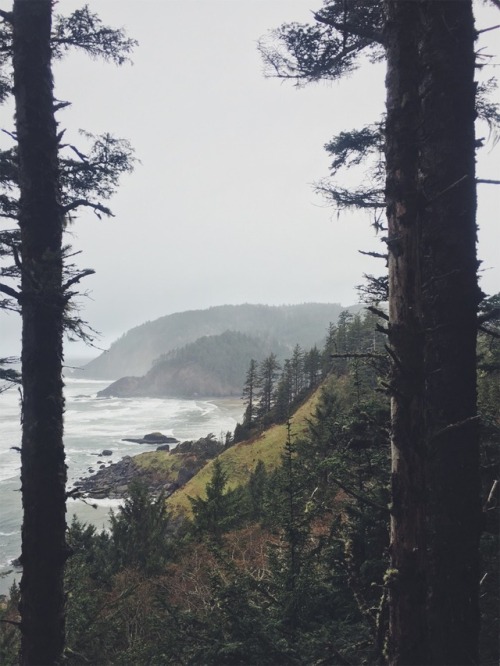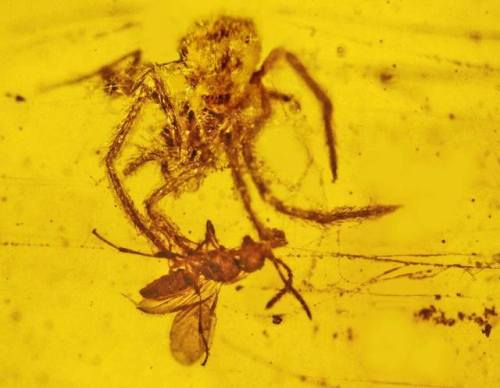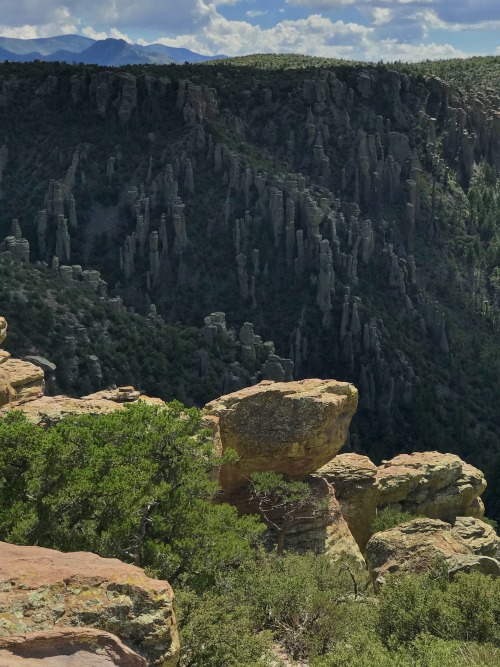Ecola State Park. Cannon Beach, Oregon. (Instagram: @williambernardlucia)

Ecola State Park. Cannon Beach, Oregon. (Instagram: @williambernardlucia)
More Posts from Rocks-everywhere and Others
When Dwarfs Meet Giants, and Other True Cosmic Fairy Tales
It’s easy to get lost in fantasy worlds through science-fiction movies and novels, but did you know that some of your favorite fairy tale characters actually exist in cosmic form? From dwarfs and giants to shape-shifters and buried treasure, the universe is home to a multitude of mystical objects.
White Dwarf Stars

You’ve probably heard of dwarfs like Happy and Sneezy (or Gimli and Thorin), but it’s unlikely you’re familiar with the space-dwelling dwarfs with names like Sirius B and ASASSN-16oh. White dwarf stars like these are typically about the size of Earth, which is pretty small as far as stars go. They represent one of three final stages of stellar evolution, along with neutron stars and black holes. Each star’s mass determines which one it will ultimately become. Stars much more massive than the Sun typically become neutron stars or black holes, and lower-mass stars end up as white dwarfs.

Our Sun will eventually become a white dwarf after it exhausts its fuel, but don’t worry — we’ve got several billion years to go! Before it is reduced to a white dwarf it will actually expand into a red giant, swelling out to encompass Earth’s orbit. But we don’t have to wait billions of years to see stellar giants … some already peek out at us from the cosmic deep.
Giants and Supergiants

The red giant star Aldebaran, located about 65 light-years away, is about 5,000 times bigger than Earth. Our Cassini spacecraft imaged Aldebaran through Saturn’s rings in 2006, but you can see it for yourself during northern winter. Just look for the brightest star in the constellation Taurus.

Fairy tale giants may be taller than trees, but these supergiant stars can be over 100,000 times “taller” than our entire planet! Supergiant stars are likely becoming more rare as time goes on. While scientists believe they used to be more common, our whole galaxy now contains just a small smattering of supergiants.

These massive stars grace the galaxy for a relatively small amount of time. They burn through their fuel extremely quickly — in just a few million years, as opposed to hundreds of billions of years for the smallest stars! Supergiants often end their lives in dramatic explosions called supernovae.

Betelgeuse — the bright, reddish star marking the shoulder of Orion — is nearing the end of its life and has expanded to become a red supergiant star. It is destined to explode as a supernova, which might happen tonight … or within the next few hundred thousand years.
Ghostly Solar Neutrinos

Even an average star like our Sun has some seemingly magical qualities. Each second, it sends billions of phantom-like neutrino particles out into space. They travel almost as fast as light and don’t usually interact with normal matter. Billions of them are zipping harmlessly straight through your body while you read this. Even at night they go through the entire Earth before reaching you!

But that’s not all … these ghostly particles are shape-shifters, too! Neutrinos can change characteristics over time, morphing between different versions of themselves. Spooky!
Buried Treasure in the Heart of the Galaxy

Extensive clouds of dust enshroud the heart of our Milky Way galaxy, hiding it from our view — at least when it comes to visible light. The dust isn’t as big a problem for infrared light, however, which has allowed us to get a glimpse of our galaxy’s chaotic core thanks to our Hubble and Spitzer space telescopes.

Future missions may peer into the galactic core in search of buried treasure — thousands of planets orbiting distant stars!
Want to learn about more cosmic objects? Find them here!
Make sure to follow us on Tumblr for your regular dose of space: http://nasa.tumblr.com

A predatory moment, frozen in geological time
You’re a hungry spider who is rushing towards a wasp that has become entangled in your web when all of a sudden everything goes sticky, you can’t move, frozen in place like the proverbial Tantalus with your food in sight but forever beyond your reach. Very soon after you are engulfed in another wash of sticky sap oozing out of a tree and everything goes dark. The spider may ironically have also been courting a painful death, since these wasps are parasitic and known to lay their eggs in spiders and other insects, with the larvae slowly consuming the insect from the inside out, preserving it alive by leaving the vital organs for last. Such a moment was caught by a unique fossil pictured below, that turned up in a hundred million year old piece of amber from what is now the Hukawng valley in Burma.
Keep reading

Yuanyang Rice Terraces
This aerial view of the mountains of Yuanyang Couny of the Yunnan province in south China presents a spectacular visual of the rice terraces that cover the landscape. Due to the scarcity of level ground, only about 5% of the land is used for agriculture. However, the Hani people, the predominant ethnic group of the region, have adapted very well.
Keep reading
hobopeeba
Hutt Lagoon is a pink lake on the West Coast near the town of Gregory. This very small town is located on a narrow spit between the ocean and the pink lagoon.
Hutt Lagoon is a pink lake, a salt lake with a red or pink hue due to the presence of the carotenoid-producing algae Dunaliella salina, a source of ß-carotene, a food-colouring agent and source of vitamin A.
I dreamed about the pink lake for a long time, and it turned out to be better than my dreams. Pools with a different shade of red, pink, and sometimes yellow and blue. Pink salt on the shore, which glitters like snow - it all looks like abstractionist paintings in reality. Nature and man in this case did the magic.

Columns of extrusive igneous rhyolite, Chiricahua National Monument, Cochise County, Arizona.
The American Museum of Natural History takes you along on a dinosaur dig in the Morrison Formation of the US west, host of many of the famous Jurassic dinosaur bones found in North America.
How is Biotechnology Preparing us to Live on the Moon and Mars?
The adventures awaiting astronauts on future long-duration missions have technologists researching sustainable ways to live away from Earth. We’re using what we know from almost 20 years of a continuous human presence on the International Space Station and looking at new technologies to prepare for extended stays on the Moon and Mars.

Biotechnology – technology that uses living organisms to make products that provide a new use – is key to this research.
With biotechnology, we’re developing new ways to manufacture medicines, build habitats and more in space. Here are some ways biotechnology is advancing spaceflight and how the same research is reaping benefits on Earth.

Healthy astronauts
Planning ways to supply food for a multi-year mission on the Moon or Mars may require making food and nutrients in space. Our scientists are testing an early version of a potential solution: get microorganisms to produce vital nutrients like those usually found in vegetables. Then, whenever they’re needed, astronauts can drink them down.
The microorganisms are genetically engineered to rapidly produce controlled quantities of essential nutrients. Because the microorganisms and their food source both have a long shelf-life at room temperature and only need water to be activated, the system provides a simple, practical way to produce essential nutrients on-demand. The same kind of system designed for space could also help provide nutrition for people in remote areas of our planet.
Our researchers are evaluating the first batches of BioNutrient samples that came back to Earth after an experimental run on the International Space Station.

Because space travel takes a toll on the human body, we’re also researching how biotechnology can be used to advance the field of regenerative medicine.
Related cells that are joined together are collectively referred to as tissue, and these cells work together as organs to accomplish specific functions in the human body. Blood vessels around the cells vascularize, providing nutrients to the tissue to keep it healthy.
Our Vascular Tissue Challenge offers a $500,000 prize to be divided among the first three teams that successfully create thick, metabolically-functional human vascularized organ tissue in a controlled laboratory environment. The vascularized, thick-tissue models resulting from this challenge will function as organ analogs, or models, that can be used to study deep space environmental effects, such as radiation, and to develop strategies to minimize the damage to healthy cells.
Plant factories
Humans have relied on plants’ medicinal qualities for thousands of years for everything from alleviating minor ailments to curing serious diseases. Now, researchers are trying to simplify the process of turning plants into medicine (i.e. how to make it compact and portable). If successful, the cost of biomanufacturing pharmaceuticals on Earth could go down, and plants could produce medicines in space.

Creating medicine on demand isn’t something we typically do, so we’re turning to experts in the field for help. Researchers at the University of California, Davis are transforming plants into mini-medicine factories for future Mars missions. They’re genetically altering an ordinary type of lettuce so that it produces a protein called parathyroid hormone. This hormone is an approved drug for treating osteoporosis, a common condition where bones become weak and brittle.

This type of research is vital to long duration spaceflight. When astronauts land on Mars, they’ll need to be strong—ready to explore. The length of the flight in zero gravity to get there and lower gravity on the surface could have a negative impact on human bones. Having the technologies needed to treat that possibility, and other unanticipated health effects of long duration spaceflight, is crucial.
Growing habitats
Vitamins aren’t the only thing astronauts could be growing on Mars; we’re exploring technologies that could grow structures out of fungi.
An early-stage research project underway at our Ames Research Center is prototyping technologies that could “grow” habitats on the Moon, Mars and beyond out of life – specifically, fungi and the unseen underground threads that make up the main part of the fungus. These tiny threads build complex structures with extreme precision, networking out into larger structures like mushrooms. With the right conditions, they can be coaxed into making new structures – ranging from a material similar to leather to the building blocks for a planetary home.
The myco-architecture project envisions a future where astronauts can construct a habitat out of the lightweight fungi material. Upon arrival, by unfolding a basic structure made up of dormant fungi and simply adding water, the fungi would grow around that framework into a fully functional human habitat – all while being safely contained to avoid contaminating the external environment.

Recycling waste
Once astronauts arrive on the surface of the Moon or a more distant planet, they’ll have to carefully manage garbage. This waste includes some stuff that gets flushed on Earth.
Today, we’re already using a recycling system on the space station to turn urine into drinking water. Poop on the other hand is contained then disposed of on spacecraft returning to Earth. That won’t be possible on more distant journeys, so, we’re turning to biomanufacturing for a practical solution.
Biology can serve as an effective recycling factory. Microorganisms such as yeast and algae feed on all kinds of things classified as “mission waste.” Processing their preferred form of nourishment generates products that can serve as raw materials used to make essential supplies like nutrients, medicines, plastic and fuel.

By taking a careful look at biological processes, we hope to develop new, lightweight systems to leverage that biology to do some helpful in-space manufacturing.
From Space to Earth
Biotechnology is preparing us for longer space missions to the Moon and then Mars – farther from Earth than humans have ever traveled before. As we prepare for those exciting missions, we’re also conducting research on the space station for the primary benefit of everyone on Earth.
January is National Biotechnology Month. To learn more about some of the ways NASA is using biotechnology to solve challenges in space and improve life on Earth, visit this link.
Make sure to follow us on Tumblr for your regular dose of space: http://nasa.tumblr.com
cats are so beautiful and loving…. when they paw at you and ask u to pet them.. when they purr and close their eyes in content… a warm loaf … when they knead on you… thinking YOU are the bread… stupid… they are the bread… i love cats… so much….
-
 twistedpretzel87 liked this · 3 weeks ago
twistedpretzel87 liked this · 3 weeks ago -
 dutifullyburningwinter liked this · 1 month ago
dutifullyburningwinter liked this · 1 month ago -
 waltersenn liked this · 1 month ago
waltersenn liked this · 1 month ago -
 shy-and-reserved reblogged this · 1 month ago
shy-and-reserved reblogged this · 1 month ago -
 midorinai reblogged this · 1 month ago
midorinai reblogged this · 1 month ago -
 tbrbeast liked this · 1 month ago
tbrbeast liked this · 1 month ago -
 take-a-look-around reblogged this · 1 month ago
take-a-look-around reblogged this · 1 month ago -
 infinitedonut liked this · 1 month ago
infinitedonut liked this · 1 month ago -
 georges95 liked this · 1 month ago
georges95 liked this · 1 month ago -
 roundabouttotheedge reblogged this · 1 month ago
roundabouttotheedge reblogged this · 1 month ago -
 noseysilverfox liked this · 1 month ago
noseysilverfox liked this · 1 month ago -
 angel5050 liked this · 1 month ago
angel5050 liked this · 1 month ago -
 wild-at-hearth reblogged this · 1 month ago
wild-at-hearth reblogged this · 1 month ago -
 muurraakkii liked this · 1 month ago
muurraakkii liked this · 1 month ago -
 windlion liked this · 1 month ago
windlion liked this · 1 month ago -
 sakataseek liked this · 1 month ago
sakataseek liked this · 1 month ago -
 daianaguidone liked this · 1 month ago
daianaguidone liked this · 1 month ago -
 nao-ao-evangelho-de-facilidades liked this · 1 month ago
nao-ao-evangelho-de-facilidades liked this · 1 month ago -
 jpmuzz liked this · 1 month ago
jpmuzz liked this · 1 month ago -
 nightquest2020 liked this · 1 month ago
nightquest2020 liked this · 1 month ago -
 djgvr69c liked this · 1 month ago
djgvr69c liked this · 1 month ago -
 loudisfun reblogged this · 1 month ago
loudisfun reblogged this · 1 month ago -
 youssefmary liked this · 1 month ago
youssefmary liked this · 1 month ago -
 ricardocs87 reblogged this · 1 month ago
ricardocs87 reblogged this · 1 month ago -
 ricardocs87 reblogged this · 1 month ago
ricardocs87 reblogged this · 1 month ago -
 ricardocs87 liked this · 1 month ago
ricardocs87 liked this · 1 month ago -
 kariachi liked this · 1 month ago
kariachi liked this · 1 month ago -
 pallasite-writes liked this · 1 month ago
pallasite-writes liked this · 1 month ago -
 unendlichklein liked this · 1 month ago
unendlichklein liked this · 1 month ago -
 lifted-drifter reblogged this · 1 month ago
lifted-drifter reblogged this · 1 month ago -
 carmen-art liked this · 1 month ago
carmen-art liked this · 1 month ago -
 sweetsmithy reblogged this · 1 month ago
sweetsmithy reblogged this · 1 month ago -
 deadman78 liked this · 1 month ago
deadman78 liked this · 1 month ago -
 astrotracksuitbattalion liked this · 1 month ago
astrotracksuitbattalion liked this · 1 month ago -
 thy420 liked this · 1 month ago
thy420 liked this · 1 month ago -
 forestryfae reblogged this · 1 month ago
forestryfae reblogged this · 1 month ago -
 lavendulafaerie liked this · 1 month ago
lavendulafaerie liked this · 1 month ago -
 coopergriggs liked this · 1 month ago
coopergriggs liked this · 1 month ago -
 freewingedwolf liked this · 1 month ago
freewingedwolf liked this · 1 month ago -
 tyrannuspitch liked this · 1 month ago
tyrannuspitch liked this · 1 month ago -
 heartshapeit reblogged this · 1 month ago
heartshapeit reblogged this · 1 month ago -
 darthcalo liked this · 1 month ago
darthcalo liked this · 1 month ago -
 ko-existing reblogged this · 1 month ago
ko-existing reblogged this · 1 month ago -
 ko-existing liked this · 1 month ago
ko-existing liked this · 1 month ago -
 starlit-storyteller reblogged this · 1 month ago
starlit-storyteller reblogged this · 1 month ago -
 starlit-storyteller liked this · 1 month ago
starlit-storyteller liked this · 1 month ago -
 j-k-i-ng reblogged this · 1 month ago
j-k-i-ng reblogged this · 1 month ago -
 autumnal-falls reblogged this · 2 months ago
autumnal-falls reblogged this · 2 months ago
225 posts
